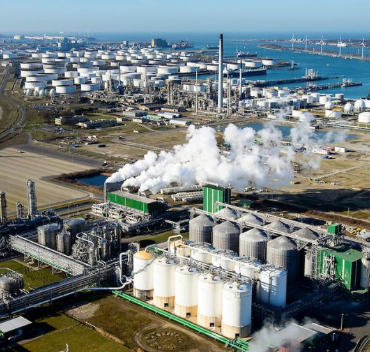
Conventional plant in India

Cavitation technology based plants in USA

Biodiesel Benefits – Why Use Biodiesel?
The smartest technologies deliver benefits to multiple interests, including improved economy, and a positive impact on the environment and governmental policies. The role of the biodiesel industry is not to replace petroleum diesel, but to help create a balanced energy policy with the most benefit to the world. Biodiesel is one of several alternative fuels designed to extend the usefulness of petroleum, and the longevity and cleanliness of diesel engines. The ultimate goal is to contribute to building a stronger, more self-sufficient community by way of a community-based biodiesel production model. A community-based biodiesel distribution program benefits local economies, from the farmers growing the feedstock to local businesses producing and distributing the fuel to the end consumer. The money stays in the community while reducing impact on the local environment and increasing energy security.
Easy to Use
One of the great advantages of biodiesel is that it can be used in existing engines, vehicles and infrastructure with practically no changes. Biodiesel can be pumped, stored and burned just like petroleum diesel fuel, and can be used pure, or in blends with petroleum diesel fuel in any proportion. Power and fuel economy using biodiesel is practically identical to petroleum diesel fuel, and year round operation can be achieved by blending with diesel fuel.
Engine and Vehicles
All diesel engines and vehicles can use biodiesel or biodiesel blends. Certain older vehicles built before 1993 may require replacement of fuel lines which contain natural rubber, as biodiesel can cause these lines to swell or crack.
Also, newer diesel vehicle models of Volkswagen, BMW and Mercedes (2007 or later) have a fuel system that utilizes a Diesel Particulate Filter (DPF) that can create a fuel/oil dilution in the diesel engine, whether diesel or biodiesel fuel is used. Over time the engine oil could be diluted by the fuel if certain precautions are not taken. One recommendation is to ensure you are running your diesel engine regularly. And, if you use 100% biodiesel in these vehicles, you must change the oil at least every 3,000 miles and check your oil level regularly (this is not an issue with vehicles using biodiesel blends, such as B20). Contact our biodiesel fuel experts here if you have any questions.
Blending and Switching with Diesel Fuel
Biodiesel can be used 100% (B100) or in blends with petroleum diesel fuel. Blends are indicated by B##, which correspond to the percentage of biodiesel in the blended fuel. For example, a 20% blend of biodiesel with 80% diesel fuel is called B20. When biodiesel is first used in a vehicle, it may release fuel tank deposits which can lead to fuel filter plugging. After this initial period, a user can switch between biodiesel and petroleum diesel whenever needed or desired, without modification.
Emissions & Greenhouse Gas reduction
Emissions
Biodiesel is the only alternative fuel to successfully complete the EPA’s rigorous emissions and health effects study under the Clean Air Act. Biodiesel provides significantly reduced emissions of carbon monoxide, particulate matter, unburned hydrocarbons, and sulfates compared to petroleum diesel fuel. Additionally, biodiesel reduces emissions of carcinogenic compounds by as much as 85% compared with petrodiesel. When blended with petroleum diesel fuel, these emissions reductions are generally directly proportional to the amount of biodiesel in the blend.
Close Contact Benefits from the “French Fry Fuel”
The reduced particulate and unburned hydrocarbons emissions that result when using biodiesel are a welcome relief in environments where workers and pedestrians are in close proximity to diesel engines, including public transport, mining, and construction. In addition, when high blends of biodiesel are used, the exhaust from diesel engines is often described as smelling like fried food, which aside from causing increased hunger in those nearby, is a welcome relief from the smell of diesel fuel exhaust.
A Clean Alternative Fuel for New and Old Engines
Diesel engines have long had a reputation of being “dirty” engines. However, with the advent of newer diesel engines equipped with exhaust gas recirculation (EGR), particulate filters, and catalytic converters, clean diesel technology provides incredible fuel efficiency with ultra low emissions levels. When coupled with the use of biodiesel, both new and old diesel engines can significantly reduce emissions, including particulate matter (black smoke).
A Closer Look at Emissions Reduction
Studies on biodiesel emissions have been conducted for almost 20 years. In that time biodiesel has undergone the most rigorous testing of any alternative fuel, having been the first and only fuel to be evaluated by the EPA under the Clean Air Act Section 211(b). This study examined the impact of hundreds of regulated and non-regulated exhaust emissions, as well as the potential health effects of these emissions. Some of these results are summarized below.


